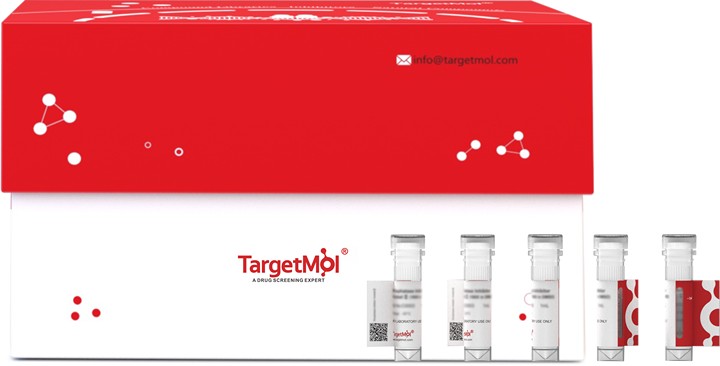Shopping Cart
- Remove All
 Your shopping cart is currently empty
Your shopping cart is currently empty

Optineurin Protein, Human, Recombinant (His) is expressed in Baculovirus insect cells with C-9xHis tag. The predicted molecular weight is 68.0 kDa and the accession number is Q96CV9.

| Pack Size | Price | Availability | Quantity |
|---|---|---|---|
| 20 μg | $489 | 20 days | |
| 100 μg | $1,500 | 20 days | |
| 1 mg | $3,260 | 20 days |
| Biological Activity | Activity has not been tested. It is theoretically active, but we cannot guarantee it. If you require protein activity, we recommend choosing the eukaryotic expression version first. |
| Description | Optineurin Protein, Human, Recombinant (His) is expressed in Baculovirus insect cells with C-9xHis tag. The predicted molecular weight is 68.0 kDa and the accession number is Q96CV9. |
| Species | Human |
| Expression System | Baculovirus Insect Cells |
| Tag | C-9xHis |
| Accession Number | Q96CV9 |
| Synonyms | Transcription factor IIIA-interacting protein (TFIIIA-IntP),OPTN,Optineurin,Optic neuropathy-inducing protein,NRP,NEMO-related protein,HYPL,Huntingtin-interacting protein L,Huntingtin-interacting protein 7 (HIP-7),Huntingtin yeast partner L,HIP7,GLC1E,FIP2,E3-14.7K-interacting protein (FIP-2) |
| Amino Acid | MSHQPLSCLTEKEDSPSESTGNGPPHLAHPNLDTFTPEELLQQMKELLTENHQLKEAMKLNNQAMKGRFEELSAWTEKQKEERQFFEIQSKEAKERLMALSHENEKLKEELGKLKGKSERSSEDPTDDSRLPRAEAEQEKDQLRTQVVRLQAEKADLLGIVSELQLKLNSSGSSEDSFVEIRMAEGEAEGSVKEIKHSPGPTRTVSTGTALSKYRSRSADGAKNYFEHEELTVSQLLLCLREGNQKVERLEVALKEAKERVSDFEKKTSNRSEIETQTEGSTEKENDEEKGPETVGSEVEALNLQVTSLFKELQEAHTKLSKAELMKKRLQEKCQALERKNSAIPSELNEKQELVYTNKKLELQVESMLSEIKMEQAKTEDEKSKLTVLQMTHNKLLQEHNNALKTIEELTRKESEKVDRAVLKELSEKLELAEKALASKQLQMDEMKQTIAKQEEDLETMTILRAQMEVYCSDFHAERAAREKIHEEKEQLALQLAVLLKENDAFEDGGRQSLMEMQSRHGARTSDSDQQAYLVQRGAEDRDWRQQRNIPIHSCPKCGEVLPDIDTLQIHVMDCII |
| Construction | 1-577 aa |
| Protein Purity | > 85% as determined by SDS-PAGE. |
| Molecular Weight | 68.0 kDa (predicted) |
| Endotoxin | < 1.0 EU/μg of the protein as determined by the LAL method. |
| Formulation | Tris-based buffer, 50% glycerol |
| Reconstitution | A Certificate of Analysis (CoA) containing reconstitution instructions is included with the products. Please refer to the CoA for detailed information. |
| Stability & Storage | Lyophilized powders can be stably stored for over 12 months, while liquid products can be stored for 6-12 months at -80°C. For reconstituted protein solutions, the solution can be stored at -20°C to -80°C for at least 3 months. Please avoid multiple freeze-thaw cycles and store products in aliquots. |
| Shipping | In general, Lyophilized powders are shipping with blue ice. Solutions are shipping with dry ice. |
| Research Background | Plays an important role in the maintenance of the Golgi complex, in membrane trafficking, in exocytosis, through its interaction with myosin VI and Rab8. Links myosin VI to the Golgi complex and plays an important role in Golgi ribbon formation. Plays a role in the activation of innate immune response during viral infection. Mechanistically, recruits TBK1 at the Golgi apparatus, promoting its trans-phosphorylation after RLR or TLR3 stimulation. In turn, activated TBK1 phosphorylates its downstream partner IRF3 to produce IFN-beta. Plays a neuroprotective role in the eye and optic nerve. May act by regulating membrane trafficking and cellular morphogenesis via a complex that contains Rab8 and hungtingtin (HD). Mediates the interaction of Rab8 with the probable GTPase-activating protein TBC1D17 during Rab8-mediated endocytic trafficking, such as of transferrin receptor (TFRC/TfR); regulates Rab8 recruitment to tubules emanating from the endocytic recycling compartment. Autophagy receptor that interacts directly with both the cargo to become degraded and an autophagy modifier of the MAP1 LC3 family; targets ubiquitin-coated bacteria (xenophagy), such as cytoplasmic Salmonella enterica, and appears to function in the same pathway as SQSTM1 and CALCOCO2/NDP52.; (Microbial infection) May constitute a cellular target for adenovirus E3 14.7 and Bluetongue virus protein NS3 to inhibit innate immune response. |

Copyright © 2015-2025 TargetMol Chemicals Inc. All Rights Reserved.